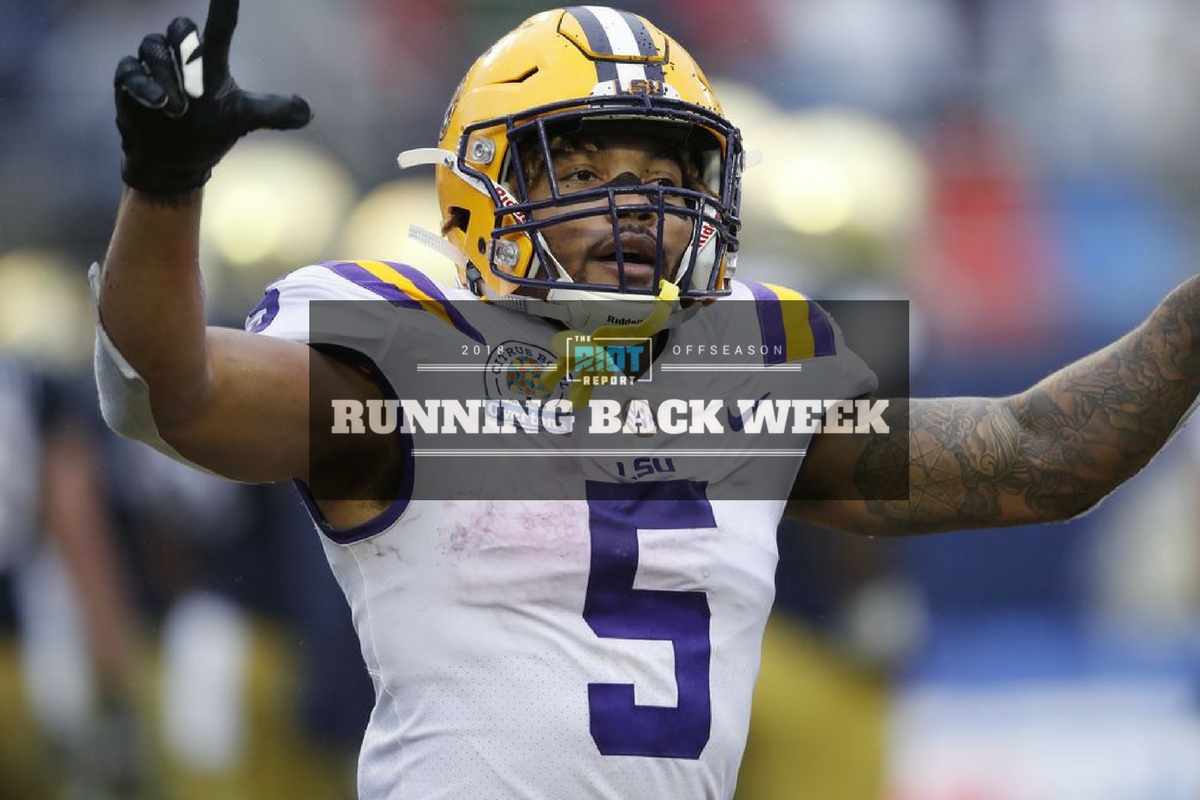Each week this offseason, we’ll be focusing on one position and how the Panthers may choose to address their needs; whether they’re in the market for an upgrade at starter or just a reliable backup, every player on the 53-man roster is going to be important in 2018.
This is Running Back Week.
Derrius Guice was seen as one of the top running back prospects coming into the 2017 season and despite a nagging injury throughout the season, Guice has likely done enough to be taken in the first two rounds of the 2018 draft; the LSU runner is often mocked as the second running back taken in the draft behind consensus top ten pick Saquon Barkley. However, while some teams will hope that he returns to his 2016 form from day one, they should also be willing to accept that they can’t guarantee getting anything more than the 2017 version of Derrius Guice; So what does the 2017 version of Guice offer teams, and what is it that they might hope an injury-free 2018 could add?
A Head Of Steam
As with his former LSU running mate Leonard Fournette, Guice is at his best when running downhill and hitting gaps with speed. While he was a step slower in 2017 than in 2016, he still showed an ability to accelerate quickly and hit the line with speed, thereby allowing him to add yards after contact and break weaker tackles:
Lots of players demonstrate this short area quickness but what separates Guice from most is his balance, which allows him to continue running after taking hits that would cause most running backs to stumble. This isn’t quite the same as being able to run through tackles in the way that some more physical runners can, but in combination with his ability to change direction and avoid head-on hits, it can allow him to turn short runs into moderate or even long gains:
What he doesn’t do well, however, is shed tackles using his strength:
That isn’t to say that he doesn’t break tackles (he does), but rather that he relies heavily on his wrecking ball running style, using his momentum to bounce off tacklers. What this means is that he is somewhat prone to being stuffed if he cannot get up to speed before contact; he is nowhere near as limited in this regard as Fournette, whose struggles out of the shotgun formation have been well documented, but he certainly fared better out of ISO formations.
In terms of this affecting his NFL performance, this might limit him somewhat but will have a greater effect on how teams use him rather than how good he can be. Teams, especially the Panthers, are looking to run more and more of their offense from the shotgun, but there are still several teams that have had success running a lot of plays out of more traditional running formations. What Guice will need to show in order to merit such schematic focus is the vision and big play potential to be a feature piece on an offense.



